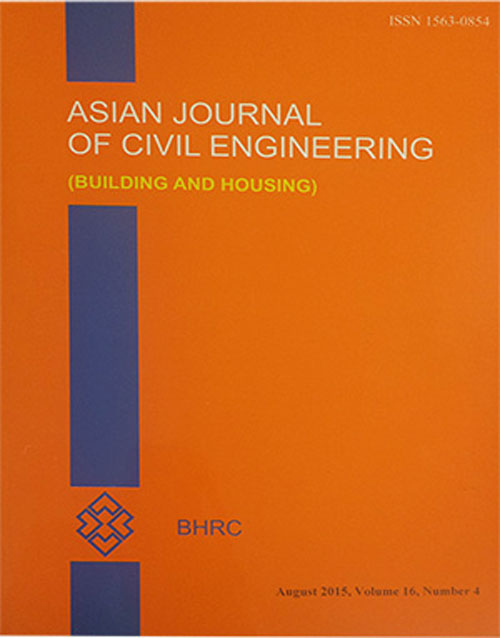TENSILE BEHAVIOUR OF TAPERED EMBEDDED COLUMN BASES
Author(s):
Abstract:
The customary exposed column bases of steel construction use anchor bolts. The anchor bolts may be subjected to various combinations of forces. The tensile (or pull-out) actions are one of these forces. The embedded steel sections can replace the anchor bolts in resisting pull-out forces. Depending on the shape of an embedded section, it can resist against pullout forces by three mechanisms namely: the bond resistance, the interlocking force and frictional resistance. The embedded tapered section develops the resistance against the pullout forces by the frictional resistance. The present paper, numerically and experimentally, studies the pull-out behaviour of tapered steel sections embedded in unreinforced concrete. The numerical models are generated with Abaqus 6.10-1. To support the numerical results, four tapered box and I-sections are tested under pull-out forces. The numerical models, study the effects of boundary conditions, the size of the concrete block, the tapering angle, and the coefficient of friction. The restraining boundary conditions prevent the splitting of the concrete block, which is the most common type of failure in embedded tapered sections, and could double its pull-out strength. Under proper confinement, the embedded tapered sections could have very large post-failure pull-out strength.
Keywords:
Language:
English
Published:
Asian journal of civil engineering, Volume:15 Issue: 4, Aug 2014
Pages:
485 to 499
https://www.magiran.com/p1245565
سامانه نویسندگان
از نویسنده(گان) این مقاله دعوت میکنیم در سایت ثبتنام کرده و این مقاله را به فهرست مقالات رزومه خود پیوست کنند.
راهنما
مقالات دیگری از این نویسنده (گان)
-
Detection of the micro and small scale damages in steel beams using spectral finite element methods, modal strain energy-based damage index, and support vector regression
Mohammad Vahidi, Armin Aziminejad *, Maryam Firoozi Nezamabadi,
Journal of Structural and Construction Engineering, -
Considerations in Design of Joints for Lattice Steel Cooling Towers of Power Plants
*, Hoshyar Nooshin, Pouyan Pourakbar
Journal of Civil and Environmental Engineering University of Tabriz,


